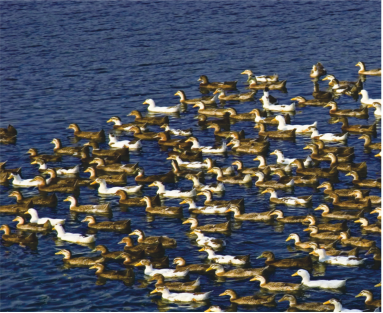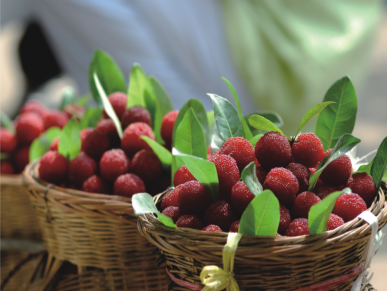Huaihua is known as the “hometown of fruits”. The city produces 2.5 million metric tons of fruits every year. Specifically, the citrus planting area is 1,464,000 mu (97,600 hectares), with an annual output of 1.8 million metric tons and an annual output value of over RMB5 billion. The city ranks first in Hunan Province in terms of the planting area, output, and output value. It is the largest production base of sugar oranges in China and boasts four national and provincial fruit base counties.
Huaihua’s livestock and poultry production is transforming towards large-scale, standardized and intensive production. Huaihua produces 3,802,000 pigs, 203,000 beef cows, 768,000 mutton sheep, 31,972,000 poultry, 64,000 metric tons of bird eggs, and 87,000 metric tons of aquatic products each year. It has 48 national and provincial standardized demonstration farms and 13 national healthy breeding bases for green aquatic products.
Huaihua boasts a long history of oil-tea camellia planting. It is among the five major oil-tea camellia production areas, the four major oil-tea camellia industrial clusters, and the three oil-tea camellia industrial belts in Hunan Province. The city is home to a number of nationally renowned trademarks and national geographical indication products such as Dongge and Yangjiajiang. Huaihua’s high-quality oil-tea camellia bases cover a total area of 850,000 mu (56,666.67 hectares).
Huaihua’s organic green tea enjoys a high reputation both at home and abroad. There are a total of 309,000 mu (20,600 hectares) of tea gardens in Huaihua, with an annual output of 17,700 metric tons. Tea gardens with an area of over 110,000 mu (7,333.33) have been certified as organic tea gardens, and the value of the “Jietan Tea” geographical brand has exceeded RMB3.8 billion.
Huaihua’s grain production area reaches 4,637,000 mu (309,133.33 hectares), with a total grain output of 1,973,000 metric tons. High-quality rice covers an area of 2,716,000 mu (181,066.67 hectares). The vegetable planting area is 1,118,000 mu (74,533.33 hectares), with a total output of 1.87 million metric tons.
Key enterprises: Hailian Food, Tian Tian Fen Ye Co., Ltd., Huaxing Oil Industry, Yuanling Daqu, Cloud Feel Phoenix, Blue Phoenix, Laocai Food, Xianghe Duck Industry, Jinzhu Rice Industry, and Yuanling Jietan.
Development priorities: Leveraging Huaihua’s abundant food resources and focusing on processing; working to develop bases for the deep processing and large-scale breeding of grain and oil, livestock and poultry, fruits, tea, and vegetables; producing and developing high-end cooked snack food and pre-made food; and R&D and production of other types of food.


Cattle breeding Shelduck breeding


Oil-tea camellia planting Jingzhou waxberry
(Translated by Professor Yu Jie)
